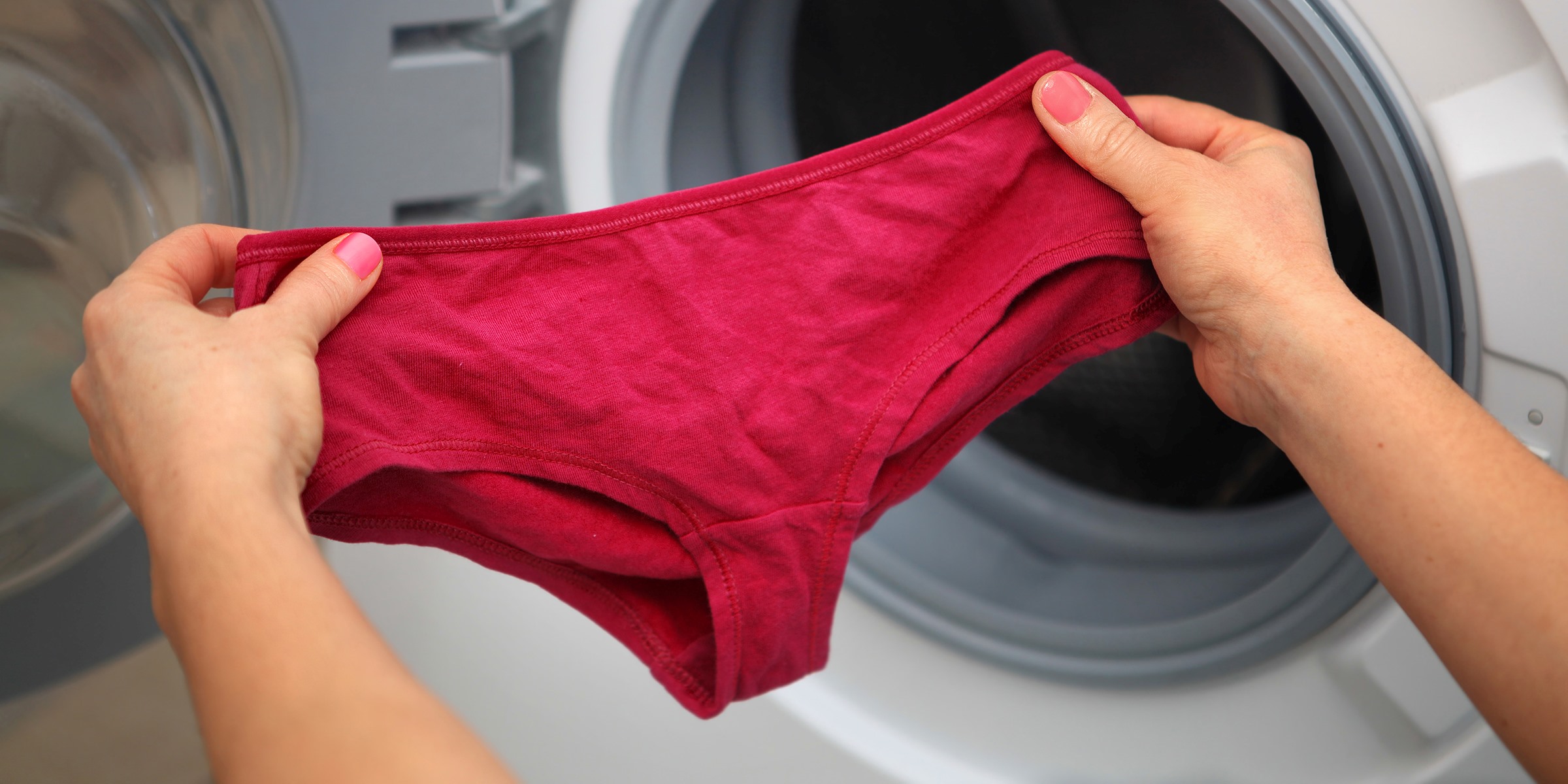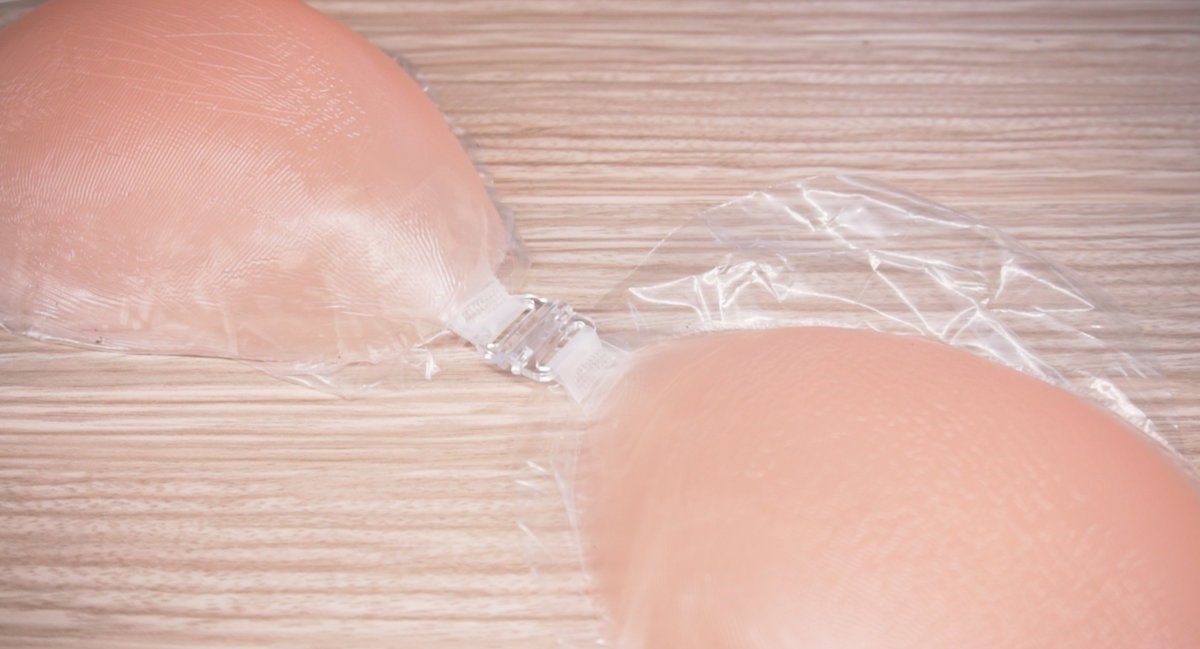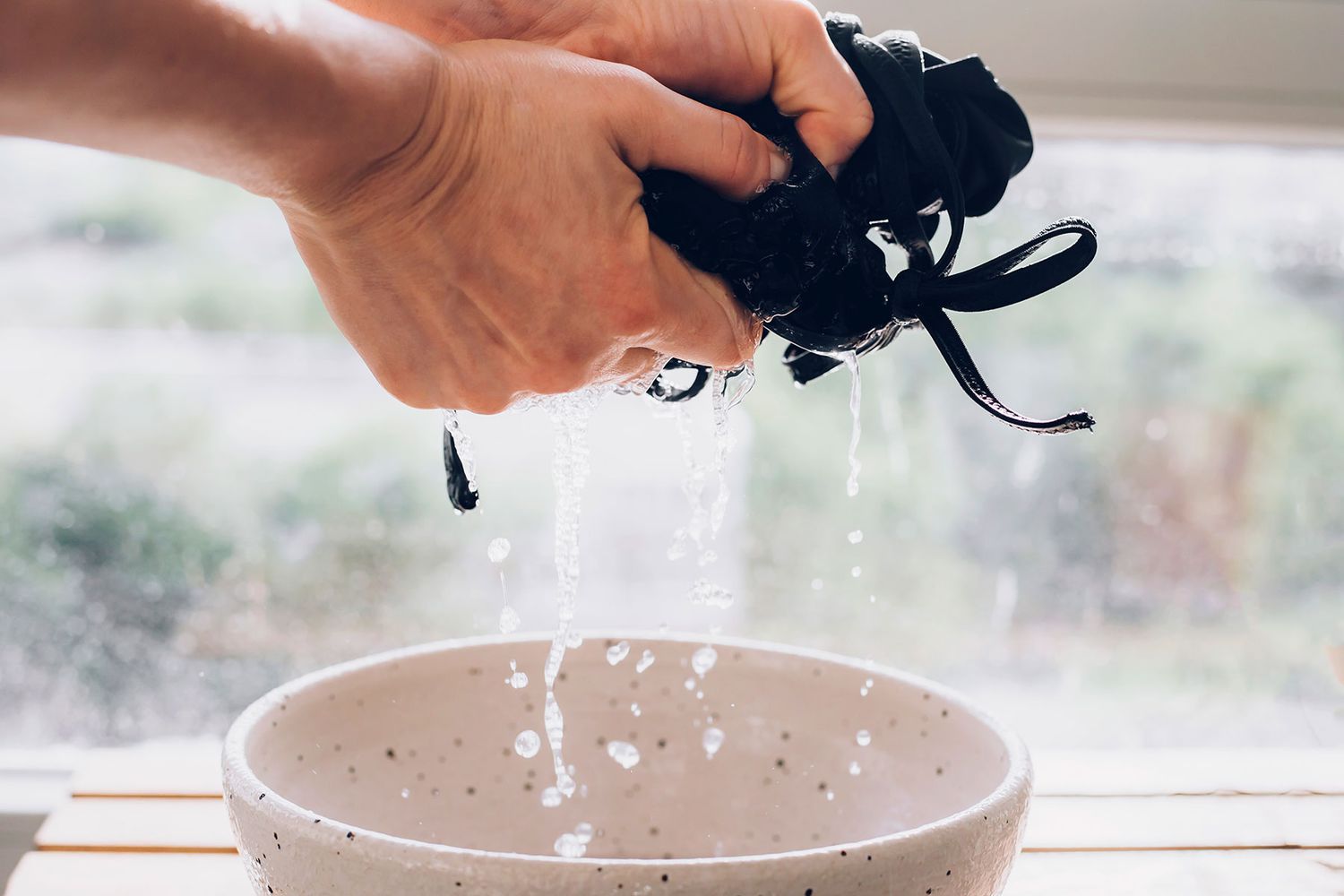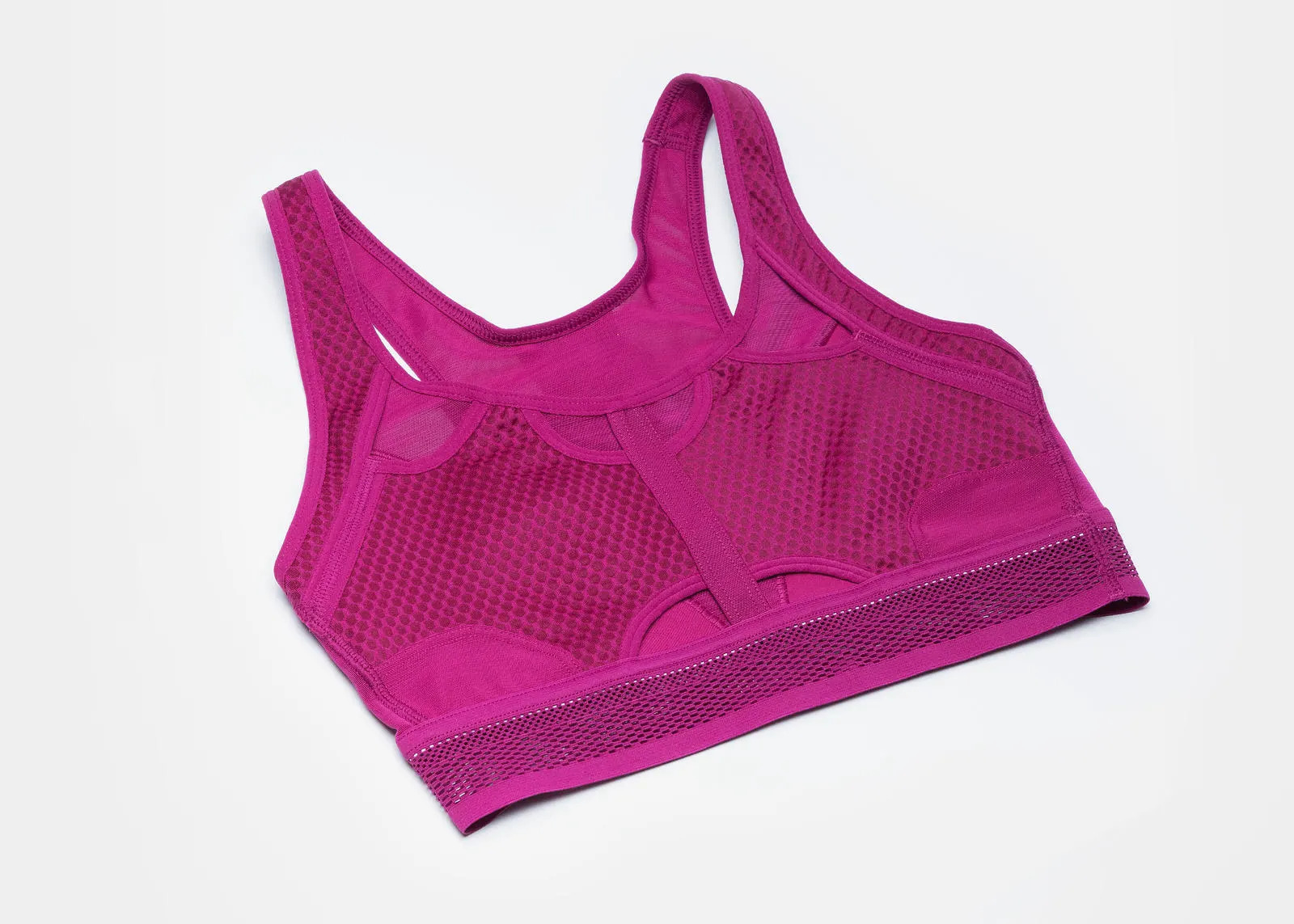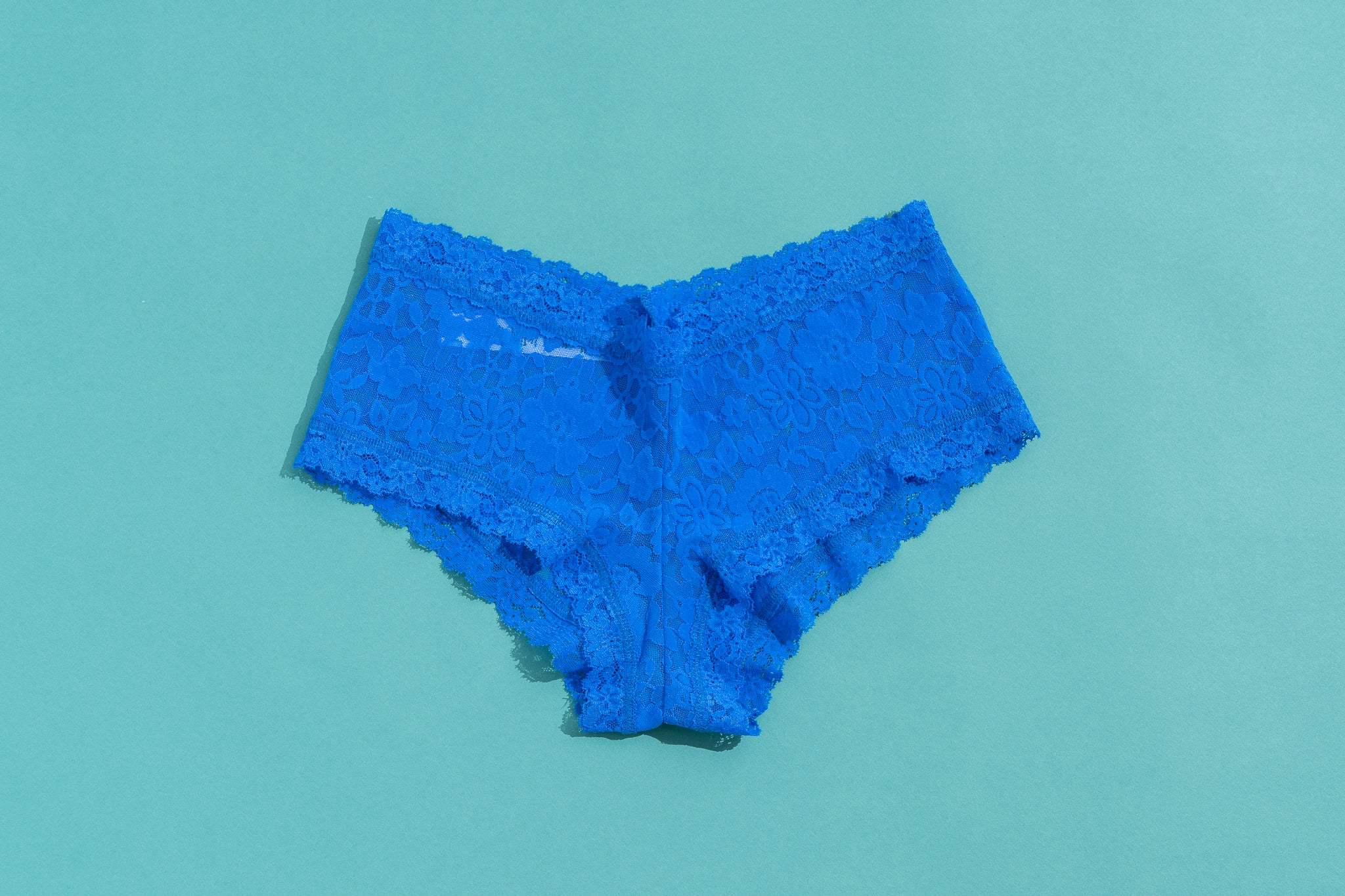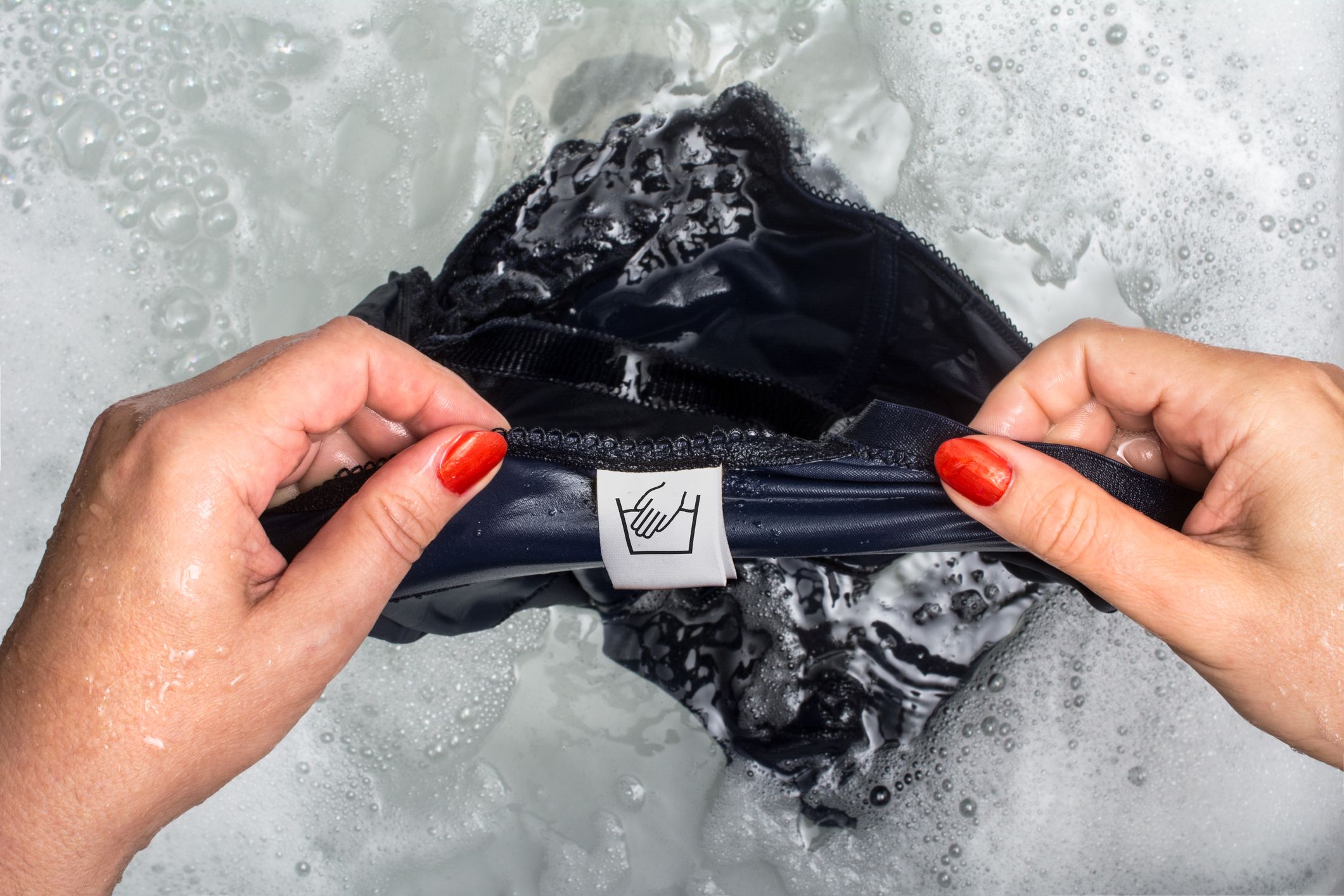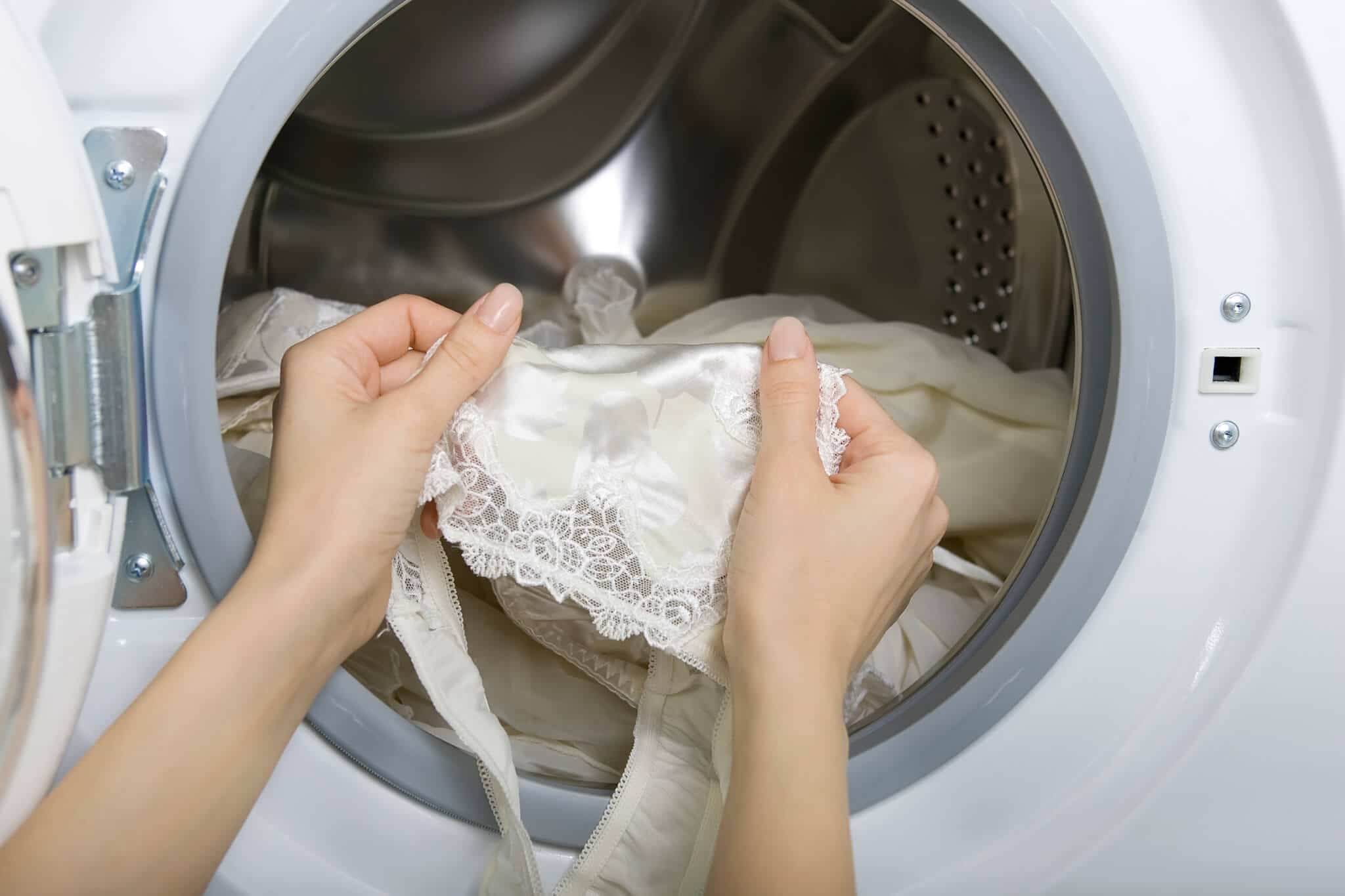Home>How-to Guides>For All>How To Wash A Robe


For All
How To Wash A Robe
Modified: August 24, 2023
Learn the best techniques and tips for washing a robe for all fabric types. Keep your robe clean and fresh with our step-by-step guide.
(Many of the links in this article redirect to a specific reviewed product. Your purchase of these products through affiliate links helps to generate commission for Under-tec.com, at no extra cost. Learn more)
Table of Contents
- Introduction
- Materials Needed
- Step 1: Check the Care Label
- Step 2: Pre-Treat Stains
- Step 3: Prepare the Washing Machine
- Step 4: Choose the Appropriate Wash Cycle
- Step 5: Add Detergent and Fabric Softener
- Step 6: Start the Washing Machine
- Step 7: Remove from the Washing Machine
- Step 8: Hang or Lay Flat to Dry
- Step 9: Optional: Iron or Steam
- Step 10: Store Properly
- Conclusion
Introduction
Washing a robe may seem like a straightforward task, but it’s important to approach it with care to ensure that the delicate fabric is not damaged. Whether your robe is made of luxurious silk, cozy flannel, or soft cotton, following the proper washing techniques will help maintain its durability and keep it fresh and clean.
Cleaning your robe regularly is crucial to remove dirt, sweat, body oils, and other residues that can accumulate over time. By taking the time to wash your robe properly, you can extend its lifespan and continue to enjoy its comfort and elegance.
In this guide, we will walk you through the step-by-step process of washing a robe, regardless of its fabric type. We will discuss the materials needed, how to pre-treat stains, what wash cycle to choose, and how to properly dry and store your robe. By following these instructions, you can keep your robe looking and feeling its best for years to come.
So, grab your robe and let’s dive into the world of robe washing!
Materials Needed
Before you begin washing your robe, gather the following materials:
- Mild detergent or robe-specific laundry detergent
- Stain remover or pre-treatment solution
- Fabric softener (optional)
- Washing machine
- Drying rack or clothesline
- Hangers or clothing clips (if hanging to dry)
- Iron or steamer (optional)
- Storage containers or closet space for proper storage
The type of detergent you choose will depend on the fabric of your robe. Always opt for mild, gentle detergents to prevent any damage or fading. If you have a specialized robe detergent, even better!
For stubborn stains, it’s helpful to have a stain remover or pre-treatment solution on hand. This will assist in effectively lifting and removing stains before washing.
If you prefer your robe to have a soft and velvety feel, consider using fabric softener during the washing process. However, keep in mind that not all robe fabrics are compatible with fabric softeners, so check the care label first.
A washing machine will be your main tool for cleaning the robe. Ensure that it is clean and free of any detergent or fabric softener residue from previous loads.
Once the robe is clean, you’ll need a drying rack or clothesline to properly air-dry it. Hanging the robe will help it maintain its shape and avoid any stretching or wrinkling.
If you prefer a crisp and wrinkle-free look, having an iron or steamer handy will allow you to smooth out any remaining creases.
Lastly, consider the storage space for your robe. Whether it’s a closet or storage containers, make sure it is clean, dry, and free from any potential sources of damage, such as direct sunlight or humidity.
Step 1: Check the Care Label
Before washing your robe, it’s important to check the care label for specific instructions and recommendations. The care label provides valuable information about the fabric type, washing instructions, and any special care requirements.
The care label can typically be found on the inside of the robe, usually at the back of the neck or along the side seam. It may contain symbols or written instructions that indicate the proper washing temperature, recommended cycle, and whether the robe can be machine-washed or if it requires hand-washing.
These care instructions vary depending on the fabric content, so it’s essential to adhere to them to prevent any damage or shrinking. For example, some robes may require a gentle cycle or cold water wash, while others can withstand regular machine-washing on a normal cycle.
Additionally, the care label may specify if any special detergents or treatments are necessary. Some delicate fabrics may require a specific type of detergent, such as one formulated for silk or wool. It’s crucial to follow these instructions to avoid causing any harm to the fabric or compromising its quality.
If the care label advises against machine-washing, it’s recommended to opt for more gentle methods like hand-washing. In such cases, fill a basin or sink with lukewarm water and a small amount of detergent. Gently agitate the robe in the soapy water, being careful not to stretch or wring the fabric, and then rinse it thoroughly.
By checking the care label and understanding the recommended washing instructions, you can ensure that you’re treating your robe with the care it deserves. This step will help you determine the appropriate washing method for your specific robe and prevent any unwanted consequences that could result from improper cleaning techniques.
Step 2: Pre-Treat Stains
Stains can be a common occurrence on robes, whether it’s a splash of coffee, an ink mark, or a bit of makeup. Before throwing your robe into the washing machine, it’s important to pre-treat any visible stains to increase your chances of effectively removing them.
Start by identifying the stained areas on your robe. Gently blot any excess liquid or substances from the fabric using a clean cloth or paper towel. Avoid rubbing the stain, as this can spread the mark and make it more difficult to remove.
Next, choose an appropriate stain remover or pre-treatment solution. Look for products that are specifically formulated for the type of stain you’re dealing with. For example, use a grease or oil stain remover for oily stains, or a color-safe bleach for stubborn discolorations.
Before applying the stain remover, it’s always a good idea to test it on a small, inconspicuous area of the robe to ensure it doesn’t cause any discoloration or damage to the fabric. Once you’re confident that the stain remover is safe to use, follow the instructions on the packaging for application.
Depending on the product, you may need to dab a small amount directly onto the stain and let it sit for a few minutes. Gently blot the area with a clean cloth or sponge to lift the stain. Avoid scrubbing too harshly, as this can damage the fabric fibers.
For tougher stains, you may need to repeat the pre-treatment process a few times or use a soft-bristle brush to help loosen the stain. Be patient and allow the product to work its magic before proceeding to the next step.
Once you’ve pre-treated all the stains on your robe, inspect the fabric to ensure that the marks have faded or disappeared. If any stains remain, you can consider repeating the pre-treatment process or seek professional help for more stubborn stains.
By pre-treating stains, you increase the chances of successfully removing them during the washing process. This step is especially important for maintaining the overall cleanliness and appearance of your robe, ensuring that it stays fresh and stain-free for longer periods.
Step 3: Prepare the Washing Machine
Now that you have pre-treated any stains on your robe, it’s time to prepare the washing machine for the cleaning process. Properly setting up the washing machine will ensure that your robe gets a thorough and effective wash while minimizing the risk of any damage to the fabric.
Start by ensuring that the washing machine’s drum is clean and free of any residue from previous loads. Wipe down the interior with a damp cloth and remove any lint or debris that may have accumulated. This will prevent any unwanted particles from transferring onto your robe during the wash cycle.
Next, separate the robe from any other garments or items you plan to wash. Washing similar-colored items together can help prevent color bleeding and ensure that your robe retains its original appearance.
If your robe is a delicate or lightweight fabric, such as silk or lace, it’s recommended to place it inside a mesh laundry bag. This extra layer of protection will help prevent tangling, snagging, or stretching of the fabric during the wash cycle.
When it comes to water temperature, refer to the care label instructions. Most robes can be washed in cold or warm water, but some fabrics may require a specific temperature setting. Adjust the water temperature accordingly.
Finally, select the appropriate wash cycle on your washing machine. For most robes, a gentle or delicate cycle is ideal to minimize any agitation or friction that could cause damage. If you don’t have a specific cycle labeled for delicates, choose a cycle with a slow and gentle spin speed.
Before starting the machine, double-check that you have properly measured the detergent and fabric softener, if desired, according to the instructions on the product packaging. Overusing or underusing these cleaning agents can affect the cleanliness and softness of your robe.
By taking the time to properly prepare the washing machine, you can ensure that your robe receives a gentle yet effective cleaning. This step will help maintain the integrity of the fabric, prevent any unwanted damage, and promote a thorough cleaning process.
Step 4: Choose the Appropriate Wash Cycle
Once you have prepared the washing machine, it’s time to select the appropriate wash cycle for your robe. Choosing the right cycle ensures that the fabric is cleaned thoroughly while minimizing the risk of damage or shrinking.
Refer to the care label on your robe to determine which wash cycle is recommended. Common wash cycles include gentle, delicate, hand wash, or even specific cycles for different fabric types like silk or wool. If no specific instructions are provided, a gentle or delicate cycle is generally a safe choice for most robes.
Avoid using heavy-duty or high-speed spin cycles, as they can be too harsh on delicate fabrics and may cause stretching, tearing, or distortion. The goal is to wash the robe using a gentle and slower cycle to preserve its quality.
If your washing machine offers customizable options such as temperature control, opt for a cooler setting to prevent any potential damage from hot water. Cold water is often suitable for most robe fabrics, but if a warmer temperature is recommended, adjust it accordingly.
Additionally, consider the duration of the wash cycle. Longer cycles may provide a more thorough clean, but be cautious about overly extended cycles, as they may cause unnecessary wear and tear on the fabric.
Once you’ve selected the appropriate wash cycle, double-check other settings, such as the water level, to ensure they align with the care label instructions. Follow any additional guidelines mentioned on the care label, such as avoiding bleach or using the delicate or hand wash cycle only.
By choosing the appropriate wash cycle, you can effectively clean your robe while minimizing the risk of damage. Adhering to the care label instructions and opting for gentle settings will help maintain the integrity and longevity of your robe, keeping it looking fresh and preserve its original beauty.
Step 5: Add Detergent and Fabric Softener
With the washing machine prepared and the appropriate wash cycle selected, it’s time to add detergent and fabric softener to ensure a thorough and fresh clean for your robe.
Start by measuring the recommended amount of detergent according to the instructions on the detergent packaging. The amount will vary depending on the size of your load and the level of dirt or stains on your robe. Use a mild detergent suitable for the fabric type of your robe, or consider using a specialty detergent designed specifically for robes or delicate garments.
If you prefer, you can also add fabric softener to enhance the softness and fragrance of your robe. However, not all fabric types are compatible with fabric softeners, so check the care label for any specific instructions. If your robe is made of a delicate or synthetic fabric, it may be best to skip the fabric softener to avoid any potential damage or build-up on the fabric.
Before adding the detergent and fabric softener, make sure to distribute them evenly by pouring them into the designated compartments or directly into the drum. Avoid pouring them directly onto the fabric to prevent any potential staining or residue.
Once the detergent and fabric softener are added, close the washing machine lid or door and double-check that all settings are correct. Take a moment to verify that the water temperature, wash cycle, and other designated options match the care label instructions.
By adding the appropriate amount of detergent and fabric softener, you can ensure that your robe receives an effective and refreshing clean. The detergent will help remove dirt, sweat, and odors, while fabric softener can provide a gentle touch of softness and fragrance to enhance your robe-wearing experience.
Step 6: Start the Washing Machine
Now that you have added the detergent and fabric softener to the washing machine, it’s time to start the wash cycle and let the machine work its magic in cleaning your robe.
Close the lid or door of the washing machine securely before starting. Ensure that all settings are properly adjusted according to the care label instructions, including the wash cycle, water temperature, and any other customizable options.
Press the “Start” or equivalent button on your washing machine to initiate the wash cycle. Depending on the chosen cycle, the machine will agitate the robe gently, using the appropriate water temperature and settings to ensure a thorough clean without causing any damage.
While the washing machine is running, avoid opening the lid or door during the cycle to maintain the optimal cleaning conditions. Interrupting the cycle may affect its effectiveness, and it’s best to let the machine complete the full cycle for the best results.
Take note of the estimated time remaining for the wash cycle and use this time to attend to other tasks or relax. Many washing machines also offer additional features, such as delayed start or extra rinse options. Feel free to utilize these features if they align with your needs and preferences.
Once the washing machine has completed the wash cycle, it may signal with a sound or display a notification. Take care when opening the door or lid, as the robe may be damp or wet, and the inside of the machine could also be moist.
Remove the clean robe from the washing machine and gently unfold it, ensuring that there are no remaining laundry items clinging to it. Examine the robe to ensure that it appears clean and fresh, with any previous stains removed or greatly diminished.
By carefully starting and monitoring the washing machine, you can trust that your robe is undergoing an effective and reliable cleaning process. Allow the machine to handle the heavy lifting while you sit back and await the refreshed outcome.
Step 7: Remove from the Washing Machine
After the wash cycle is complete, it’s time to carefully remove your freshly cleaned robe from the washing machine. Follow these steps to ensure the best results and prevent any damage to the fabric.
Start by opening the lid or door of the washing machine gently. Depending on the model, some machines automatically unlock once the cycle is finished, while others may require manual intervention.
Once the machine is open, reach inside and carefully lift the robe out of the drum. Take care to support its weight, as wet fabric can be heavier than expected. Avoid pulling or yanking on the robe, as this can stretch or damage the fabric.
Check the robe for any remaining detergent or fabric softener residue. If you notice any, give the robe a gentle shake or run it under cold water to remove any excess product. This will help prevent build-up and potential skin irritations when wearing the robe.
Inspect the robe to ensure that it appears clean and fresh. Look for any lingering stains or spots that may require additional attention. If any stains remain, you may need to repeat the pre-treatment process or seek professional help for more stubborn marks.
If you used a mesh laundry bag to protect delicate fabrics, carefully remove the robe from the bag. Be cautious not to snag or stretch the fabric as you unzip or untie the bag.
Gently unfold or straighten the robe to its natural shape. Smooth out any wrinkles or folds, taking care not to stretch or pull on the fabric excessively.
Before moving on to the next step of drying, make sure to properly clean and maintain your washing machine. This will help ensure its continued performance and prevent any potential transfer of dirt, lint, or detergent residues onto future loads of laundry.
By following these steps, you can safely and effectively remove your robe from the washing machine, ready to move on to the next stage of the cleaning process. Proper handling at this stage will help preserve the fabric’s integrity and ensure a satisfactory outcome.
Step 8: Hang or Lay Flat to Dry
Once you have removed your robe from the washing machine, it’s crucial to choose the appropriate drying method to preserve its shape and quality. Depending on the fabric and care instructions, you can hang your robe or lay it flat to dry.
If you choose to hang your robe, use a sturdy clothes hanger with a wide enough shoulder area to prevent any stretching or distortion. Avoid using wire hangers that could leave marks or indentations on the fabric. Gently drape your robe over the hanger, ensuring that it hangs freely without any folds or bunching.
Find a well-ventilated area, away from direct sunlight, to prevent any potential fading or discoloration. Hanging the robe in a dry room will aid in the drying process and allow for proper air circulation.
If you prefer to lay your robe flat to dry, find a clean and flat surface, like a drying rack or a clean towel. Smooth out the robe and gently arrange it, ensuring that it retains its original shape.
Periodically check the robe as it dries, smoothing out any wrinkles that may have formed. This will help prevent stubborn creases from setting in, ensuring that your robe looks fresh and neatly pressed when dry.
Keep in mind that certain fabrics, such as silk or delicate lace, may require specific drying methods. Always refer to the care label instructions to ensure you’re following the best drying practice for your particular robe.
The drying time can vary depending on factors such as fabric thickness, humidity levels, and air circulation. It’s essential to allow sufficient time for your robe to air-dry fully before wearing or storing it.
Avoid using a clothes dryer unless the care label explicitly states that it’s safe to do so. The heat and tumbling action of a dryer can potentially shrink or damage certain fabrics. Air-drying is generally the safest and most effective method for drying robes.
By choosing the appropriate drying method and allowing your robe sufficient time to dry completely, you can ensure that it maintains its shape, color, and overall quality. Patience in the drying process will reward you with a beautiful and ready-to-wear robe.
Step 9: Optional: Iron or Steam
After your robe has dried, you have the option to give it a final touch-up by ironing or steaming. This step is especially helpful for robes made of fabrics prone to wrinkling, such as cotton or linen. However, it is crucial to check the care label before proceeding, as not all fabrics are suitable for ironing or steaming.
If ironing is safe for your robe, set the iron to the appropriate temperature according to the fabric type. Use a low to medium heat setting for delicate fabrics like silk or synthetic blends, and a higher heat setting for sturdier fabrics like cotton or flannel. Make sure to read the care label and adjust the iron accordingly.
Ensure that the iron is clean and free of any residue or particles that could transfer onto the robe. If needed, lightly dampen a clean cloth and wipe the iron’s soleplate before use. This will prevent any potential staining or damage to your robe.
Place the robe flat on an ironing board or another suitable surface, ensuring there are no wrinkles or folds. Gently press the iron over the fabric, moving in smooth, straight motions. Avoid applying too much pressure or leaving the iron in one spot for too long, as this can cause heat damage or shiny marks on the fabric.
For fabrics that are not suitable for direct ironing, consider using a garment steamer. The gentle steam will help release wrinkles without the direct contact of an iron. Hang your robe on a sturdy hanger and use the steamer following the manufacturer’s instructions. Keep the steamer moving in a continuous motion to prevent excessive moisture buildup.
Remember, if you are unsure about ironing or steaming your robe, it’s best to consult the care label or seek professional advice. Improper ironing techniques or excessive heat can damage or even melt delicate fabrics.
Once you have finished ironing or steaming, allow your robe to cool down and fully dry before wearing or storing it. This will ensure that any moisture introduced during the process has evaporated, preventing any potential damage or musty odors.
By optional ironing or steaming your robe, you can achieve a crisp and polished appearance. This final touch-up will remove any remaining wrinkles and leave your robe looking fresh, neat, and ready for use.
Step 10: Store Properly
Once your robe is clean, dry, and possibly ironed or steamed, it’s important to store it properly to maintain its quality and extend its lifespan. Follow these steps to ensure your robe stays in excellent condition between uses.
Start by choosing an appropriate storage location. Ideally, the storage area should be clean, dry, and well-ventilated to prevent any musty odors or mold growth. Avoid storing your robe in damp or humid areas, such as the bathroom, as moisture can damage the fabric.
If you have a closet, designate a specific area or hanger for your robe. This will keep it separate from other garments and prevent any potential snags or wrinkling. Opt for thick padded hangers or clothing clips to help maintain the robe’s shape and avoid shoulder imprints.
If space is limited or you prefer alternative storage options, consider using a fabric garment bag or a storage container specifically designed for robes. These will protect your robe from dust, sunlight, and potential pest damage while keeping it neatly stored and easily accessible.
Before storing your robe, ensure that it is completely dry. Any moisture left in the fabric can lead to unpleasant odors or even mildew growth. Give it ample time to air out and confirm there is no lingering dampness before putting it away.
Avoid folding your robe excessively, as this can cause creases and strain the fabric fibers. If your storage space allows, hang your robe on a sturdy hanger to maintain its shape and prevent wrinkling. If folding is necessary, do so gently and avoid tight or sharp folds that can leave permanent marks.
If your robe has any delicate embellishments, such as lace, beads, or embroidery, take extra precautions during storage. Avoid hanging or folding it in a way that could snag or damage these intricate details. If necessary, place a layer of tissue paper between any embellished areas to provide extra protection.
Regularly check on your stored robe to ensure its condition. Inspect for any signs of pests, discoloration, or deterioration. If you notice any issues, take immediate steps to address them and ensure the proper care and preservation of your robe.
By following these storage guidelines, you can keep your robe in optimal condition, ready to provide comfort and style whenever you wear it. Proper storage will help maintain its shape, prevent damage, and ensure that your robe remains a cherished and long-lasting wardrobe staple.
Conclusion
Taking proper care of your robe is essential to preserve its quality and ensure that it remains comfortable and stylish for years to come. By following the step-by-step guide outlined in this article, you can effectively wash your robe, remove stains, choose the appropriate wash cycle, and properly dry and store it.
Begin by checking the care label for specific instructions on washing and care. Pre-treat any stains, prepare the washing machine, and select the appropriate wash cycle based on the fabric type. Add the recommended amount of detergent and fabric softener if desired, and start the washing machine.
Once the wash cycle is complete, remove the robe from the washing machine and carefully consider whether ironing or steaming is necessary. Finally, hang or lay your robe flat to dry, ensuring it’s in a well-ventilated area away from direct sunlight.
Properly storing your clean and dry robe is the final step. Choose a storage location that is clean, dry, and well-ventilated, and avoid folding it excessively to prevent creasing. If possible, hang your robe on a padded hanger to maintain its shape and minimize wrinkles.
Remember to refer to the care label instructions specific to your robe to ensure the best cleaning and care practices. By following these steps, you can keep your robe looking and feeling its best, ensuring that it remains a cozy and stylish companion for many moments of relaxation and self-care.
